
|







(alphabetical and illustrated) Introduction | A - 1 | A - 2 | B - 1 | B - 2 | C - 1 | C - 2 | C - 3 | D | E | F G - H | I - J - K | L - M | N - O | P | Q - R | S - 1 | S - 2 | T | U - V - W - X - Y - Z |
|
|
|
|
| the introductory footage put into the beginning of a serial episode to show what happened at the end of the previous episode | ||
| referring to performances between actors who are uncommonly suited and perfectly complementary to each other; performances that lack screen chemistry can sometimes be disastrous for a film; see also buddy film | Examples: Spencer Tracy and Katharine Hepburn, Fred Astaire and Ginger Rogers, Jack Lemmon and Walter Matthau, Jerry Lewis and Dean Martin, Elizabeth Taylor and Richard Burton, Tom Hanks and Meg Ryan, Stan Laurel and Oliver Hardy, Mel Gibson and Danny Glover in Lethal Weapon (1987), Paul Newman and Robert Redford in Butch Cassidy and the Sundance Kid (1969), Meg Ryan and Billy Crystal in When Harry Met Sally... (1989), Tobey Maguire and Kirsten Dunst in Spider-Man (2002), Leonardo DiCaprio and Kate Winslet in Titanic (1997), Will Smith and Tommy Lee Jones in Men In Black (1997), Lauren Bacall and Humphrey Bogart in To Have and Have Not (1944), Errol Flynn and Olivia de Havilland in The Adventures of Robin Hood (1938); examples of poor screen chemistry: Ben Affleck and Jennifer Lopez in Gigli (2003), Marilyn Monroe and Laurence Olivier in The Prince and the Showgirl (1957), and Hugh Grant and Andie MacDowell in Four Weddings and a Funeral (1994) | |
| literally, the combination of the two Italian words for "clear/bright" and "dark"; refers to a notable, contrasting use of light and shade in scenes; often achieved by using a spotlight; this lighting technique had its roots in German Expressionistic cinematography; aka high-contrast lighting or Rembrandt lighting; flat lighting or TV lighting (bright and flat lighting with no shadows) is its opposite |
|
|
| refers to films popular with women, but also used in a derogatory sense to marginalize films with heavy, sappy emotion and numerous female characters; aka tearjerkers | Examples: Steel Magnolias (1989), Thelma & Louise (1991) | |
| technically, any actor under the age of 18; aka moppet | Examples: Tatum O'Neal in Paper Moon (1973), Jackie Coogan in The Kid (1921), Jackie Cooper in The Champ (1931) | |
| slang for a martial arts film | ||
| a person who plans, designs, organizes, sequences, and directs dancing, fighting, or other physical actions or movements in a film or stage production; a dancer is known as a hoofer. |  Examples:
Busby Berkeley was the most famous early choreographer. Bob Fosse more
recently directed heavily-choreographed films such as Cabaret
(1972) and All That Jazz (1979). This image was taken
from a choreographed dance sequence in Singin'
in the Rain (1952). Examples:
Busby Berkeley was the most famous early choreographer. Bob Fosse more
recently directed heavily-choreographed films such as Cabaret
(1972) and All That Jazz (1979). This image was taken
from a choreographed dance sequence in Singin'
in the Rain (1952). |
|
| refers to a film/movie enthusiast or devotee; also used in the name of a leading film magazine | 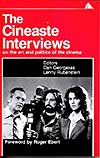 |
|
| a French word that literally means "true cinema" or "cinema truth"; a method or style of documentary movie-making with long takes, no narration and little or no directorial or editing control exerted over the finished product; usually made without actors, and often with a minimum of film equipment, a small film crew (camera and sound), impromptu interview techniques, and a hand-held camera and portable sound equipment - that solely documents the action in front of the camera; sometimes used to loosely refer to a documentary-style film or minimalist cinema; popularized in the 1950s French New Wave movement; now widely used (often inappropriately) to refer to the popular, artsy trend of using hand-held camera techniques; also termed free cinema (UK) or direct cinema (UK) | 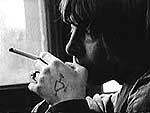 Example:
the Canadian film Warrendale (1967) by Allan King, set in a
school for severely disturbed children, was a classic of cinéma
vérité film-making. Example:
the Canadian film Warrendale (1967) by Allan King, set in a
school for severely disturbed children, was a classic of cinéma
vérité film-making. |
|
| the term commonly refers to widescreen processes or anamorphic techniques, that use different magnifications in the horizontal and the vertical to fill the screen; it is also the specific trademark name for 20th Century Fox's commercially-successful widescreen process which uses an aspect ratio of 2.35:1 (originally it could be as wide as 2:66:1 - to compete with Cinerama and 3-D processes in the 1950s. | 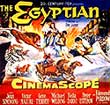 Example:
20th Century Fox's The Egyptian (1954) was shown in CinemaScope;
the first CinemaScope feature was The Robe (1953). Example:
20th Century Fox's The Egyptian (1954) was shown in CinemaScope;
the first CinemaScope feature was The Robe (1953). |
|
| relating to or suggestive of motion pictures; having the qualities of a film. | ||
| specifically refers to the art and technique of film photography, the capture of images, and lighting effects, or to the person expert in and responsible for capturing or recording-photographing images for a film, through the selection of visual recording devices, camera angles, film stock, lenses, framing, and arrangement of lighting; the chief cinematographer responsible for a movie is called the director of photography (or D.P.), or first cameraman; one of the earliest movie-picture machines, patented by the Lumiere brothers in 1895, was termed a Cinematographe. |  Example: Visions
of Light: The Art of Cinematography (1993) profiled a history of
the art of cinematography with examples from more than 125 films from
some of the greatest film-makers of all time Example: Visions
of Light: The Art of Cinematography (1993) profiled a history of
the art of cinematography with examples from more than 125 films from
some of the greatest film-makers of all time |
|
| a wide-screen filming process that first used three cameras and three projectors to achieve an encompassing view of the subject matter, and was projected on a curved screen of about 160 degrees; it was the first commercially-successful multiple-camera/multiple-screen process. |  Examples: This
is Cinerama (1952), Cinerama Holiday (1955), Seven Wonders of the
World (1955), Search for Paradise (1957), South Seas Adventure (1958), How
the West Was Won (1962), and The Wonderful World of the Brothers
Grimm (1962). Examples: This
is Cinerama (1952), Cinerama Holiday (1955), Seven Wonders of the
World (1955), Search for Paradise (1957), South Seas Adventure (1958), How
the West Was Won (1962), and The Wonderful World of the Brothers
Grimm (1962). |
|
(clapper (board)) |
a small black or white board or slate with a hinged stick on top that displays identifying information for each shot in a movie, and is filmed at the beginning of a take. The board typically contains the working title of the movie, the names of the director, the editor, and the director of photography, the scene and take numbers, the date, and the time. On the top of the clapboard is a hinged wooden stick (called a clapstick or clapper) which is often clapped to provide audio/visual synchronization of the sound with the picture during editing; electronic clappers and synchronization are currently in use instead of the old-fashioned clapboard. |  Example:
the clapboard or slate from Hitchcock's Psycho
(1960). Example:
the clapboard or slate from Hitchcock's Psycho
(1960). |
| refers to the animation of models constructed of clay, putty, plasticine, or other moldable materials, often through stop-motion. |  Examples:
the Wallace & Gromit animated films, and Chicken Run (2000). Examples:
the Wallace & Gromit animated films, and Chicken Run (2000). |
|
| slang denoting a 'hit' film | ||
a film characterized by scenes of great tension, danger, adventure, suspense, or high drama, often climaxing at the end of a film, or at the end of a multi-part serial episode, where the plot ending and the fate of the protagonist(s) are left unresolved; the name was derived from the movie serials of the 1930's where each week the hero (or heroine) was perilously left dangling from a cliff -- with a 'to-be-continued' ending -- to increase interest for the next episode (sequel). |
 A
good example of early movie serial cliffhangers is The Perils of
Pauline (1914), from which the term originated; also, The
Empire Strikes Back (1980) ended with Lando Calrissian (Billy
Dee Williams) and Chewbacca (Peter Mayhew) leaving in the Millenium
Falcon to rescue frozen Han Solo (Harrison Ford) - with the unresolved
issue between Darth Vader (David Prowse/James Earl Jones) and Luke
Skywalker (Mark Hamill) after their climactic duel (Was Vader really
Luke's father?) A
good example of early movie serial cliffhangers is The Perils of
Pauline (1914), from which the term originated; also, The
Empire Strikes Back (1980) ended with Lando Calrissian (Billy
Dee Williams) and Chewbacca (Peter Mayhew) leaving in the Millenium
Falcon to rescue frozen Han Solo (Harrison Ford) - with the unresolved
issue between Darth Vader (David Prowse/James Earl Jones) and Luke
Skywalker (Mark Hamill) after their climactic duel (Was Vader really
Luke's father?) |
|
|
|
the highest point of anxiety or tension in a story or film in which the central character/protagonist faces, confronts, and deals with the consequence(s) of all his/her actions, or faces the antagonist in a climactic battle or final engagement; a crisis often leads to a climax; also called the film's high point, zenith, apex, or crescendo; a climax may be followed by an anti-climax or denouement |
 Example:
the two protagonists cling for their lives from Mount Rushmore in the
climax of Hitchcock's North by Northwest (1959). Example:
the two protagonists cling for their lives from Mount Rushmore in the
climax of Hitchcock's North by Northwest (1959).
|
|
|
see film clip | |
|
(CU) |
a shot taken from a close distance in which the scale of the object is magnified, appears relatively large and fills the entire frame to focus attention and emphasize its importance; i.e., a person's head from the shoulders or neck up is a commonly-filmed close-up; a tight shot makes the subject fill almost the entire frame; also extreme close-up (ECU or XCU) is a shot of a part of a character (e.g., face, head, hands) to emphasize detail; also known as detail shot or close on; contrast to long-shot (LS) |
 Examples: an extreme close-up or tight shot from Hitchcock's Psycho (1960) 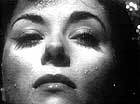 and a closeup of Becky Driscoll's (Dana Wynter) face, after Miles (Kevin McCarthy) gives her apathetic lips a kiss, and realizes that she is "one of them" in Invasion of the Body Snatchers (1956) |
|
|
slang meaning either Hollywood or Los Angeles, both entertainment centers | |
|
|
literally, means "tail" in Italian, and usually refers to musical selections; in film, it refers to the epilogue, ending or last section of a film (often wordless), that provides closure, a conclusion, or a summary of the preceding storyline |  Examples:
the long-view of the tree-lined road in The Third
Man (1949), the final shot of the stairway in The
Exorcist (1973), or the gravesite epilogue in Schindler's
List (1993) Examples:
the long-view of the tree-lined road in The Third
Man (1949), the final shot of the stairway in The
Exorcist (1973), or the gravesite epilogue in Schindler's
List (1993) |
|
|
a slang term for money or financing | |
|
(film) |
a phenomenon of light or visual perception that enables one to differentiate otherwise identical objects caused by differing qualities of the light reflected or emitted; contrast to black and white. |
 Example:
Pleasantville (1998) combined both black and white and color images
in the same frame. Example:
Pleasantville (1998) combined both black and white and color images
in the same frame. |
|
|
the film-altering process whereby a black and white film is digitally changed to include color; popularized but controversial in the 1980s. |
|
|
(comedienne) |
an actor who specializes in genre films that are designed to elicit laughter from audiences; also known as a comic |
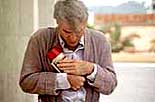 Example:
Steve Martin in The Jerk (1979). Example:
Steve Martin in The Jerk (1979). |
|
|
a film with elicits laughter or humor by celebrating or showing the eternal ironies of human existence; types include screwball, dark/black, farce, slapstick, dead-pan, parody, romantic comedy, etc. | Example: See many examples in the genre section on comedy films |
|
|
a humorous or farcical interlude in a dramatic film, usually provided by a buffoonish character, intended to relieve the dramatic, built-up tension or heighten the emotional impact by means of contrast |  Example:
Walter Huston as a grizzly prospector - dancing a jig on ground laced with
gold in The Treasure of the Sierra Madre (1948) Example:
Walter Huston as a grizzly prospector - dancing a jig on ground laced with
gold in The Treasure of the Sierra Madre (1948) |
|
|
a film associated with difficult teen rites of passage (from adolescence to adulthood), the onset of puberty, the loss of naive innocence and childhood dreams, the experience of growing up, achieving sexual identity, etc.; aka teen films |  Examples:
Rebel Without A Cause (1955) with iconic
James Dean, Summer of '42 (1971), American
Graffiti (1973), Breaking Away (1979), the films of John
Hughes Examples:
Rebel Without A Cause (1955) with iconic
James Dean, Summer of '42 (1971), American
Graffiti (1973), Breaking Away (1979), the films of John
Hughes |
|
|
a great performance in a film by an actor, sometimes referring to the one before his or her death; it originally referred to a special performance that was requested by a sovereign, royal, head of state, or other important person | |